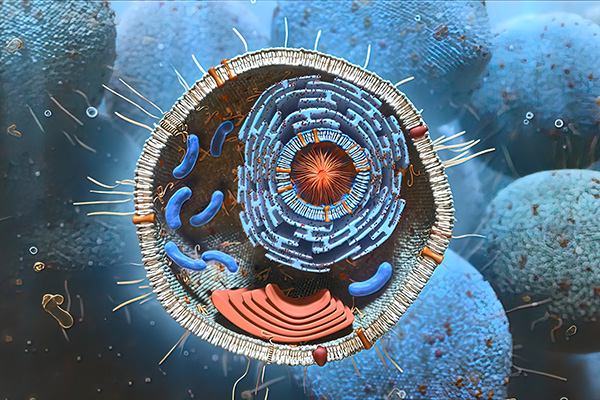Παρουσίαση/Προβολή

BIOLOGY I (W. 2024 - 2025)
(54406) - Α. Eliopoulos - Μ. Gazouli - Μ. Roubelakis - Th. Alissafi - Κ. Gkouskou - Ν. Lagopati - Κ. Pavlou
Περιγραφή Μαθήματος
The content of the course corresponds to the subject of Cell Biology, which examines the structure and function of the prokaryotic and eukaryotic cell at the molecular & cellular level, its evolutionary characteristics, the mechanisms of expression and the control of the genetic material, the intercellular communication, the histological differences eukaryotic cell and its interaction with the microenvironment. Accordingly, the students acquire laboratory skills related to special instruments and laboratory techniques used to analyze the structure and function of cells and tissues of the human body.
Content Summary:
- Introduction to Biology: Overview of scientific methodology and experimental design.
- Evolution of the Cell: Origins of life, the concept of ribozymes, and early cellular evolution.
- Cellular Organization: Characteristics and organization of eukaryotic and prokaryotic cells, cellular diversity, and model organisms used in cell biology.
- Chemical Composition: Types of macromolecules in cells, including proteins, lipids, carbohydrates, and nucleic acids.
- Enzymatic Catalysis: Principles of enzyme function and catalysis.
- Modern Laboratory Techniques: Techniques for obtaining and studying biological material, including light microscopy, fluorescence microscopy, electron microscopy, cytochemistry, immunohistochemistry, cell fractionation, electrophoresis, chromatography, autoradiography, and cell cultures.
- Biomolecules: Roles and functions of different biomolecules within the cell.
- Cell Membrane Structure: Plasma membrane structure, lipid bilayer, membrane proteins, synapses, neuromuscular synapses, carrier proteins, ion channels, Na+/K+ pump, membrane potential, and nerve cell signaling.
- Intracellular Systems: Post-translational modifications, secretion and endocytosis pathways, Golgi complex, lysosomes, peroxisomes, and associated diseases.
- Cell Signaling: General principles of cell signaling, G-protein coupled receptors, enzyme-linked receptors, and intracellular signaling pathways.
- Cytoskeleton: Structure and function of intermediate filaments, microtubules, actin microfilaments, cilia, cell movement, and cytoskeletal diseases.
- Energy Production: Mechanisms of cellular energy production, including the citric acid cycle, oxidative phosphorylation in mitochondria, and photosynthesis in chloroplasts.
- Cell Division: Processes of mitosis and meiosis, cell cycle regulation, and mechanisms of cell cycle control.
- Multicellular Organization: Cellular interconnection, extracellular matrix structure and function.
- Developmental Biology: Tissue origin, embryonic morphogenesis, differential gene expression, and homeogenetic genes.
- Carcinogenesis: Cellular transformation and mechanisms underlying cancer development.
Laboratory Exercises:
1. Protein Electrophoresis: Techniques for separating and analyzing proteins.
2. Immuno-Enzymatic Assay: The ELISA method for detecting and quantifying proteins.
3. The Photonic Microscope: Use of light microscopy to study cell structure and function.
Ημερομηνία δημιουργίας
Τρίτη 4 Οκτωβρίου 2022
-
Δεν υπάρχει περίγραμμα